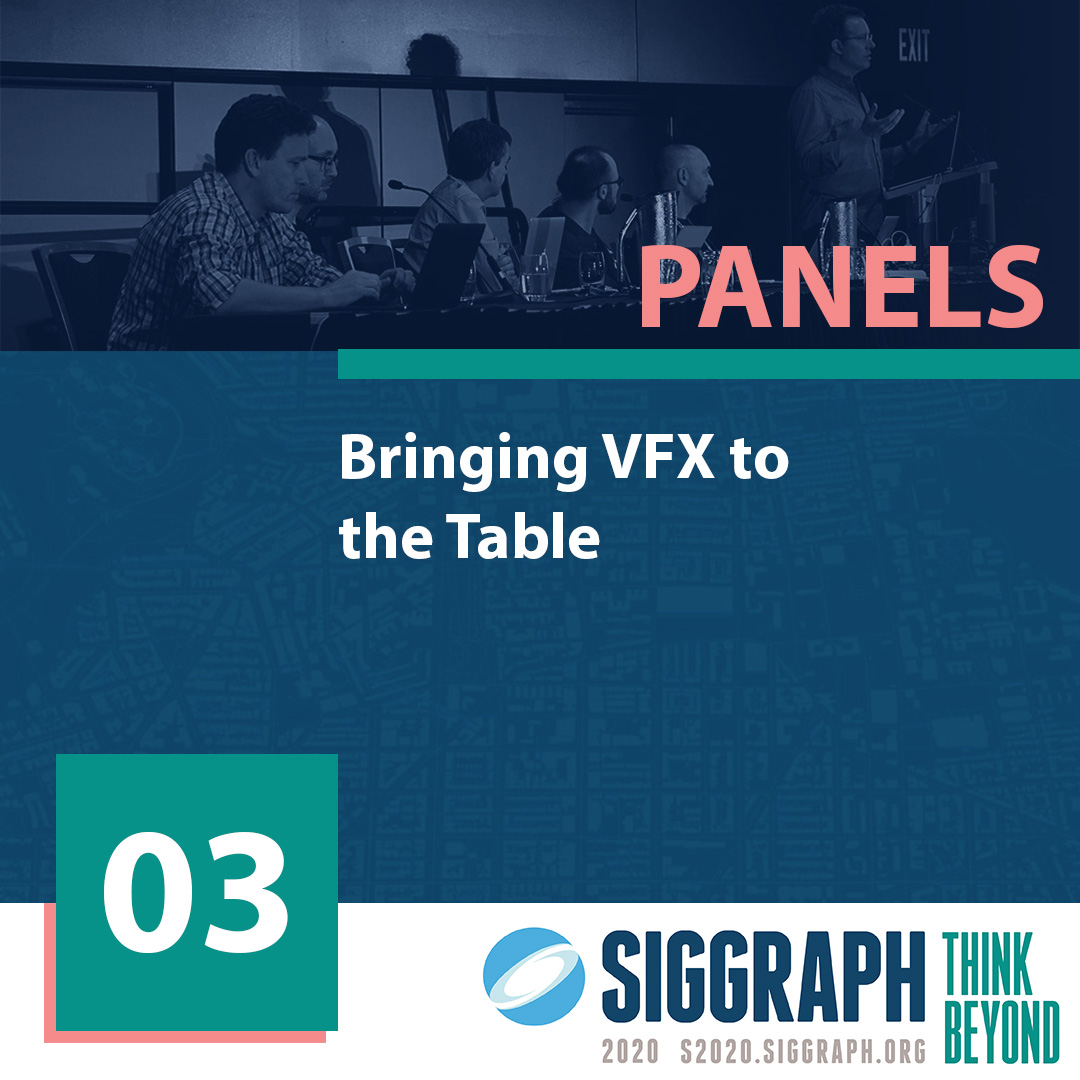“Bringing VFX to the Table” by Hanlin, Holmes, Sayed and Teich
Conference:
Type(s):
Entry Number: 03
Title:
- Bringing VFX to the Table
Presenter(s)/Author(s):
Abstract:
ABSTRACT
This panel brings together academics and practitioners to discuss the structural problems facing visual effects within the film and television industry today. This discussion is organized around four sub-topics: 1) labor solutions and what unionization would mean, 2) perceptions of VFX artists and their contributions within the industry by filmmakers and artists themselves, as well as the audience, 3) issues of inclusivity along gender and racial lines, and their effects on work/life balances, and 4) VFX as equal creative partners rather than isolated, temporary, highly-skilled specialists.
This panel is a continuation of work begun by the faculty and practitioner organizers, Heath Hanlin (Syracuse University, VPA) and Shaina Holmes (Syracuse University, Newhouse) on studying structural challenges and obstacles to entry for students hoping to enter the VFX industry, in particular women, and artists of color. An earlier iteration of this discussion was held at the 2020 Sundance Film Festival. The hope is that the technical focus and high attendance by industry practitioners at Siggraph, adds practitioner perspectives and educator feedback to the sub-topics listed above.
Simply put, today’s film and television industry rely heavily on visual effects, both to advance the story or as a means to hide imperfections to keep the audience engaged without technical distractions. Traditional conceptions of VFX artistry as a production step that comes after primary cinematography is simply outdated. Unfortunately, the economic and work-flow structure of the industry accepts this new reality while at the same time attempting to compensate, credit, and organize VFX artists within the outdated framework. Often this aspect of the conversation is moored in debates surrounding the potentiality of AI to either positively impact the industry (no more underpaid routinized tasks for artists) or negatively (crafts persons and artists can be replaced by algorithms). Rather, a more fruitful discussion around this point should be centered on labor issues and globalization (sub-topic #1) of VFX within the industry to reflect the VFX Artist’s increased importance in most contemporary productions.
This new economic bargaining power cannot be established if we first don’t engage with, educate, and change the discourse surrounding how other creatives in the industry view VFX artists (sub-topic #2) and their critical roles. This panel discusses the stereotype of today’s VFX workers as “easily trainable, easily replaceable, ‘button-pushers’, who can be substituted with intuitive AI” and how we can shift the narrative artisans and craft persons working on the level of a writer, director, or editor, using their talents to equally construct the narrative vision of the piece.
The film and television industry relies so heavily on VFX artists for their visions, that similar to the video game industry, long hours are required from those artists who toil away behind a monitor and keyboard. At the same time, similar to the film and television industry as a whole, it is overly represented by majority white male workers who also disproportionately are not responsible for childcare and its accompanying social and emotional labor. As such, VFX professionals, who are women, find themselves working within an unregulated part of the industry working over 100 hours per week on a project to project basis, not knowing what city, let alone country, their next job will be in, and if they will have time to dedicate to supporting, or even starting, a family (see sub-topic #3). This panel discussion hopes to expand these voices and their perception on solutions to inclusivity within the industry.
Issues of equality are revealed in a broader sense when we realize VFX artists need to be recognized more as equal creative partners (see sub-topic #2) due to their increased reliance upon and importance in the contemporary digital workflow of content creation and visual storytelling. More than merely surveying other creators’ perceptions of VFX artists’ contributions, there needs to be new contractual precedents and workflow procedures established in order to accomplish structural changes. For example, VFX artists need to be at the beginning of production choices, not merely as pre-visualization workers, but as co-creators and organized division heads who can ready their departments for the production troubleshooting invariably ahead. VFX need not be an afterthought – not secondary “fixers” who through a combination of creativity and technical know-how, solve problems quickly with little to no additional compensation. Rather, they need to be co-leaders beginning right from pre-production until post as co-creatives.
This discussion amongst the panelists is expected to explore the topics above, but also expand and evolve into new conversations and connections to the artist, technology, industry, globalization, COVID-19 impact, and education spaces. Towards the end of the dialogue, we will invite the audience to participate by asking questions to the panel for open discussion and sharing their own knowledge and experiences.




